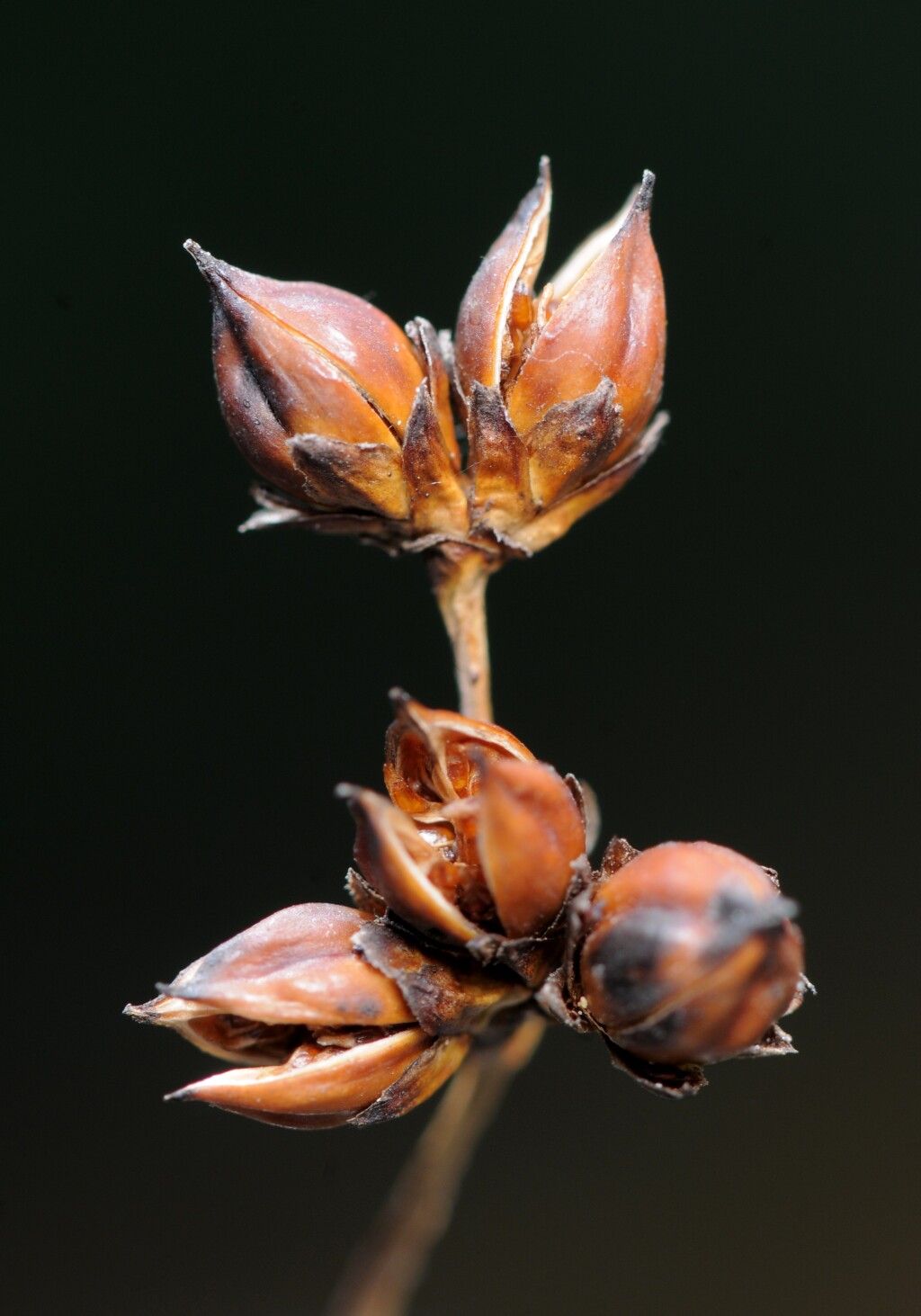Juncus acutus subsp. acutus
Sharp RushDensely tufted perennial with very short rhizome. Culms erect, dark green, rigid, 30–150 cm high, each with c. 2–5 leaves and several mid to dark brown shining cataphylls toward base; pith dense, uninterrupted, permeated with vascular bundles (visible in transverse section). Leaf-blades pungent, terete, culm-like; pith similar to that of culms; auricles absent. Inflorescence usually dense, with several to many radiating major branches which are often obscured, flowers clustered toward the ends of the ultimate branchlets; primary bract erect and pungent, continuous with culm; prophylls absent. Tepals tinged reddish-brown in part, equal or subequal, 2.5–4 mm long, firm-textured for the greater part, the outer 3 mucronate, the inner 3 notched or truncate with wide membranous margins at the tip; stamens 6; anthers red, 1.4–2 mm long. Capsules usually golden-brown, darker in upper half, ovoid to ellipsoid, 4–6 mm long, with a rather conical apex contracting ± abruptly to a mucro, c. twice as long as tepals; valves thick-walled, the outer faces concave in the upper part; seeds 1.3–2 mm long, with 2 ± equal curved appendages, giving the seed a contorted appearance. Flowers throughout the year but mostly spring–summer, ripe fruit can be found virtually all year.
LoM, MuM, Wim, GleP, VVP, VRiv, MSB, RobP, MuF, GipP, OtP, WaP, Gold, CVU, GGr, DunT, NIS, EGL, EGU, WPro, HSF, HNF, OtR, Strz, MonT, VAlp. Also naturalised WA, NT, SA, Qld, NSW, Tas. Native to Europe, Africa, the Americas. A very serious environmental weed (and proclaimed noxious weed in Victoria), Juncus acutus has invaded mine dumps, coastal flats, irrigation areas, and other low-lying and often saline areas.
Albrecht, D.E. (1994). Juncus. In: Walsh, N.G.; Entwisle, T.J., Flora of Victoria Vol. 2, Ferns and Allied Plants, Conifers and Monocotyledons, pp. 197–233. Inkata Press, Melbourne.
 Spinning
Spinning
